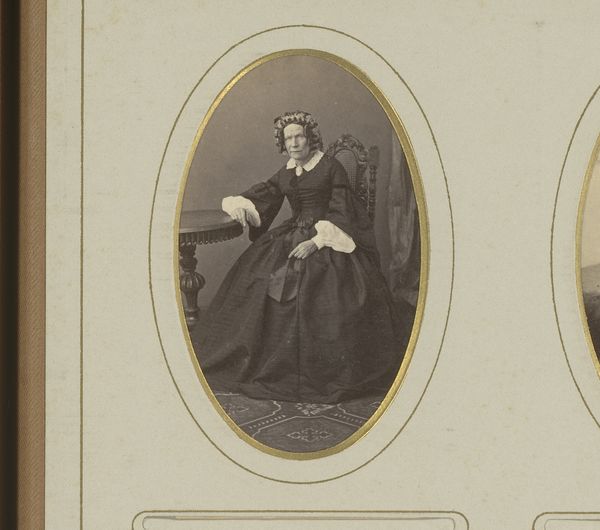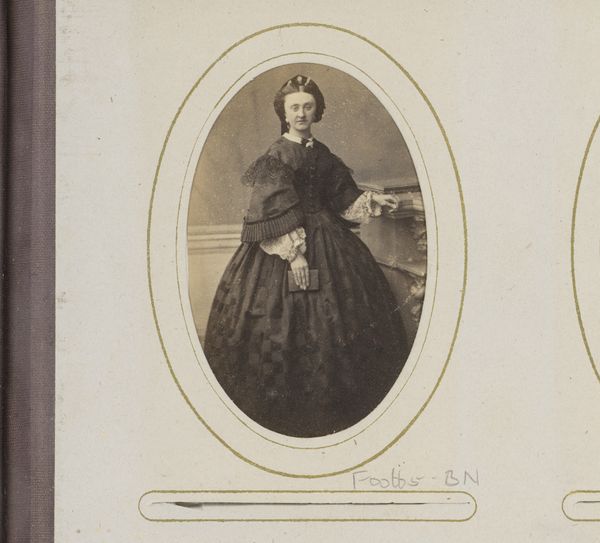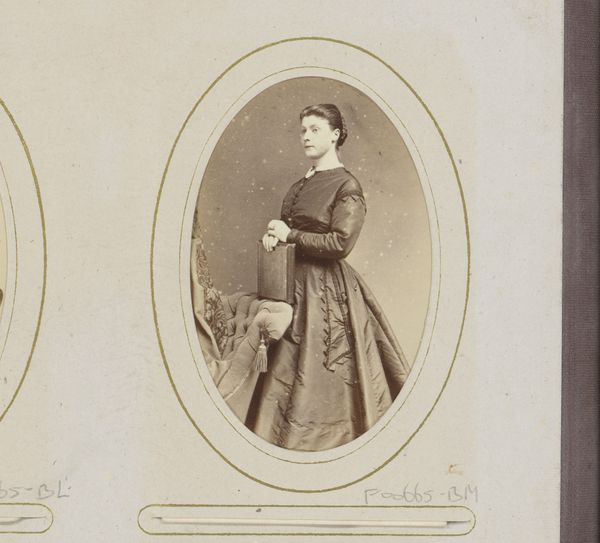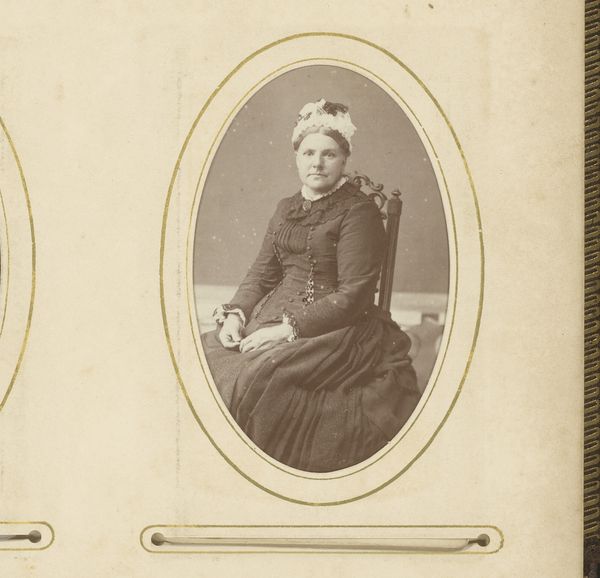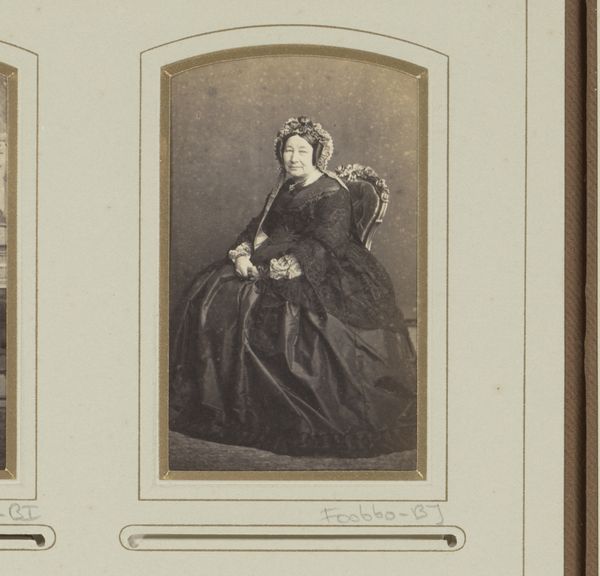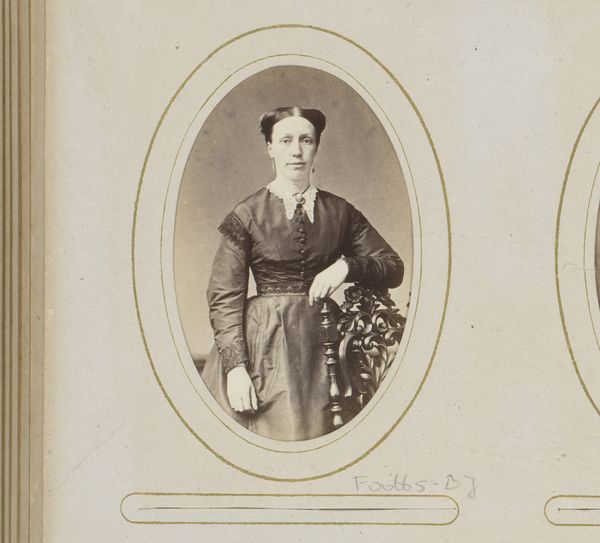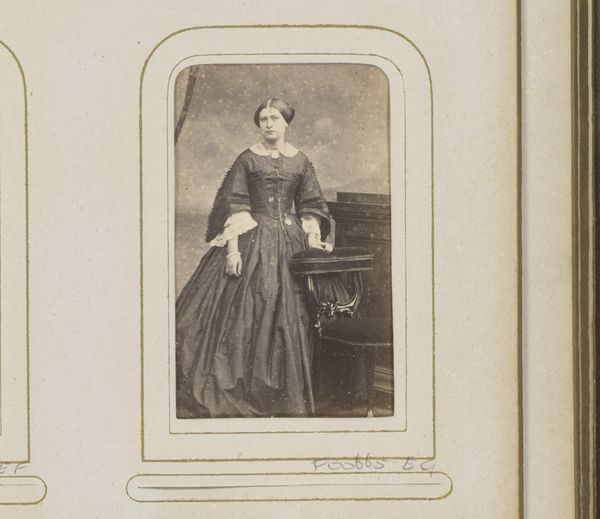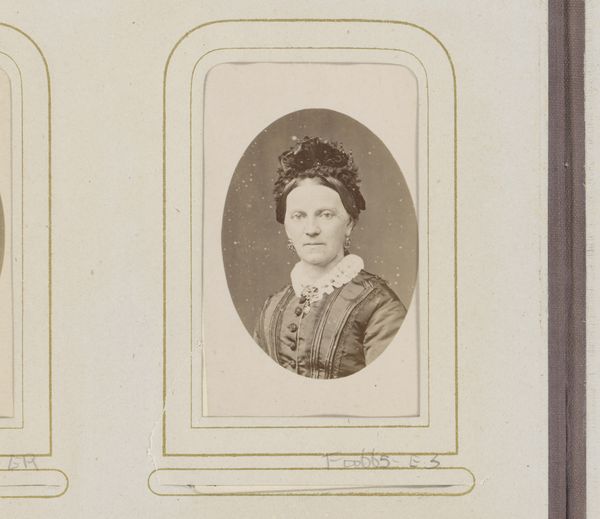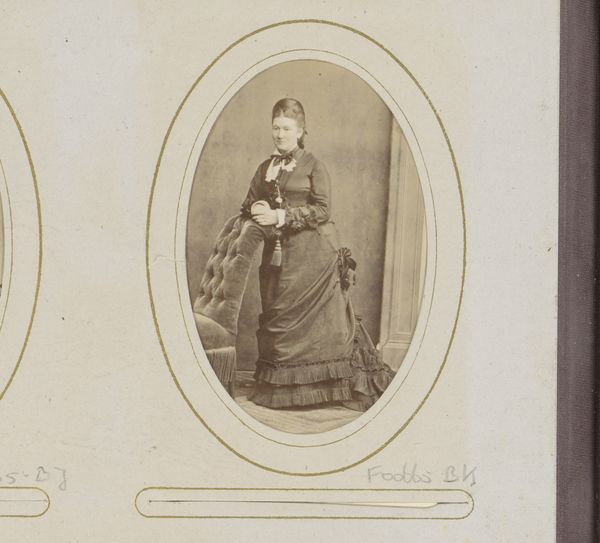
Dimensions: height 84 mm, width 54 mm
Copyright: Rijks Museum: Open Domain
Curator: Here we have "Portret van een vrouw met muts en ketting," dating from between 1857 and 1864, a photograph presently housed here at the Rijksmuseum. Editor: My first impression is of intense detail—look at the dress, the precise rendering of the lace and pattern! It speaks volumes about societal expectations for women and their appearance in this era. Curator: Precisely! This is an albumen print, a popular photographic process at the time. Consider the laborious process: egg whites coated onto paper, light exposure, development. It’s a world away from our digital snapshots, demanding skill and patience. Editor: It’s remarkable how the medium itself conveys meaning. Photography during this period was already laden with sociopolitical implications around representation and status. How does she want to be remembered? What positionality is she performing through clothing and the adornments she wears? Curator: The portrait tradition it evokes can't be ignored, either. Think about how the artist, Wegner & Mottu, has chosen to frame this woman, placing her within an oval that evokes a classical cameo, hinting at nobility. Also think about the fact that she’s seated, a formal pose indicative of status. This carefully constructed image says much about class and social positioning during the 19th century. Editor: The choice of clothing and accessories reflects a woman trying to occupy and even consolidate, a particular place in a society governed by such rigid rules and clear markers. Do you think this photography served her interests well, or simply captured a moment in which societal conditions were imposed upon her? Curator: It's difficult to say, but consider that portrait photography provided emerging groups of citizens new means of self-representation. This may have been less of an act of consolidation of the status quo than we imagine. Editor: True. The very existence of this artifact raises some vital questions for the present day. What remains unspoken in this portrait? Where does agency truly reside when faced with societal and technological impositions? Curator: I agree. And through understanding its making and context, it offers so much on the lives and visual culture of the past.
Comments
No comments
Be the first to comment and join the conversation on the ultimate creative platform.
